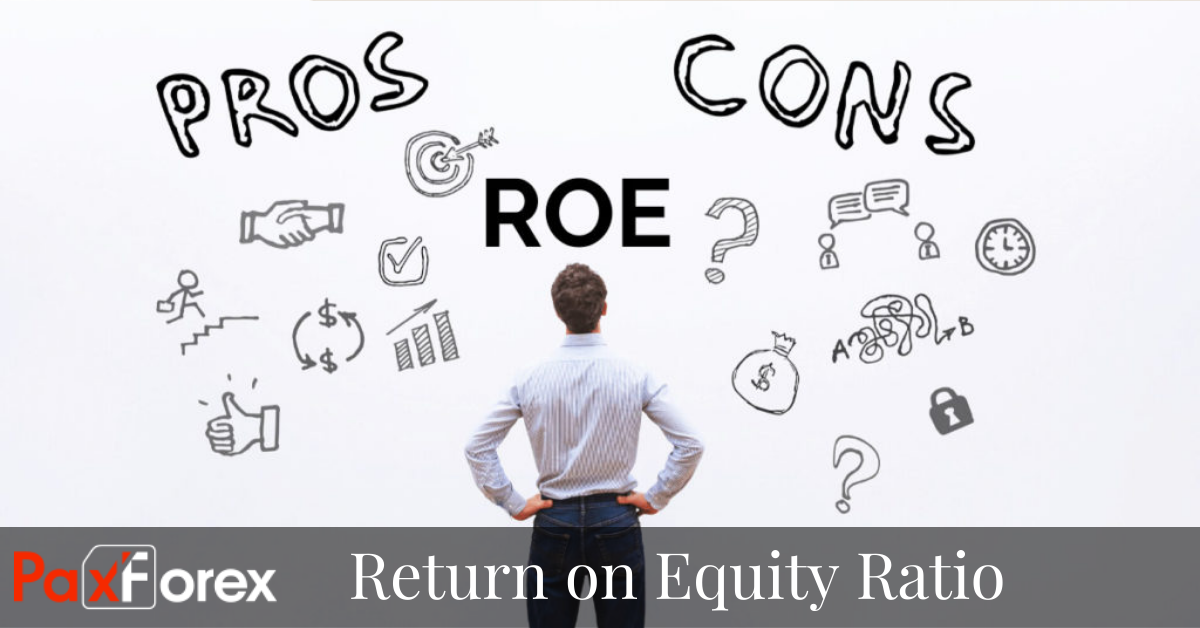
The term “Return on Equity” or ROE refers to the profitability metric that helps in estimating a company’s capacity to generate profits by leveraging the investments made by the shareholders of the company. In other words, ROE shows the dollar profit generated by each dollar of common shareholders’ equity. Moreover, ROE can be seen as the mixture of two financial statements – net income and interest paid to preference shareholders from the income report and shareholder’s equity from the balance sheet.
However, a normally operating business makes a profit, i.e. creates some return on the capital of its owners. That is why the market value of the company (capitalization) may significantly differ from the value of net assets. From the investor's point of view, the main value is not the market value of assets, but the profitability that they can generate.
Accordingly, the question arises: how to measure this value? Here ROE helps, which shows what kind of profitability the company brings to its owners.
The formula for Return on Equity ratio looks like this - ROE (return on equity) = net profit /shareholders' average equity.
In fact, ROE is the interest rate at which the company's shareholders' funds are used. It is a key indicator for determining the effectiveness of the company. For example, ROE = 20% indicates that each dollar invested in the business makes 20 cents of profits annually.
This profit can be received by the investor either directly in the form of dividends or reinvested in the business - aimed at development, equipment purchase, debt reduction, etc. If the reinvestment of profit will be effective, i.e. it will allow keeping the ROE at the same level or higher, the investor will receive this profit in the form of an increase in the exchange value of shares.
It should be noted that the ROE indicator is not stable for most companies. From year to year, it varies depending on different factors. To assess the prospects of a particular company's stock, it is worthwhile to study the historical dynamics of ROE, which will make it possible to make an assumption about the fairness of the current valuation and build a forecast of forwarding values for the planned investment period.
Obviously, calculations of ROE do not cause any particular difficulties, especially for most large companies in the network and financial publications you can always find ready-made data.
To make it more understandable, let`s take Apple as an example.
Like we mentioned before, return on equity is calculated as Net Income attributable to Common Stockholders (Net Income minus the preferred dividends paid) divided by its average Total Stockholders Equity over a certain period of time. Apple's annualized net income attributable to common stockholders for the quarter that ended in Dec. 2019 was $88,944 Mil. Apple's average Shareholders Equity over a quarter that ended in Dec. 2019 was $90,010 Mil. Therefore, Apple's annualized return on equity (ROE) for the quarter that ended in Dec. 2019 was 60.18%.
Return on Equity: Advantages
Some of the major advantages of return on equity are:
- It categorically describes the percentage return received by the equity shareholders.
- It helps investors in analyzing the performance of different equity investments and thereby impact their future investment plan.
Return on Equity: Disadvantages
Some of the major limitations of return on equity are:
- It can be misleading in the case of new businesses where the capital requirement is high in the first days ending in lower ROE.
- The ROE can be manipulated using different accounting caveats like raising the project life, decreasing depreciation rate, etc.
Summary
So, ROE is one of the major return metrics being used by the equity investors as it captures the quality of the investment validated through actual figures. It helps investors to determine how effectively the management uses corporate funds.
Investors using ROE for analysis should remember that this multiplier is used to analyze companies within individual industries. Also, debt burden, long periods of losses and a sharp increase in profitability can distort the objectivity of the indicator.
Therefore, it is preferable to use ROE together with its analogs: profitability of assets, capital employed and ROE of sales.







